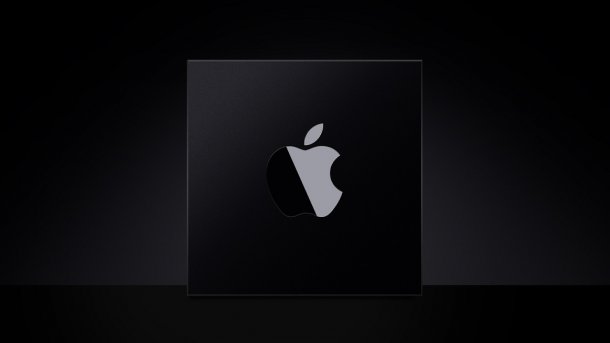5G and Wi-Fi: Apple's own chips from next year – with restrictions
According to new rumors from Asia, Apple is getting closer to producing its own wireless chips.

An Apple Silicon SoC.
(Image: Apple)
Apple's long-standing corporate goal is to keep as many core technologies as possible in its own hands. This has been the case for SoCs and processors since the introduction of Apple Silicon. When it comes to wireless technology, however, the iPhone manufacturer is still dependent on its suppliers – for the mobile modem from Qualcomm and for the WLAN department from Broadcom. But something could happen in both areas in the coming year, partly due to Apple's own research work, which is being driven forward in Munich and elsewhere.
According to reports from Asia, Apple's Wi-Fi chips could appear in an iPad for the first time from 2025, while the fourth-generation iPhone SE is set to be equipped with Apple's 5G chip. Bluetooth chips are also apparently on Apple's agenda. According to a report in the Taiwan-based electronics trade journal DigiTimes, work on its own WLAN chips is in its final stages. As usual, the company intends to have these produced by contract manufacturers. At least "some" of next year's iPad models are to receive the components. This could allow Apple to reduce some of its purchases from Broadcom. However, it is also conceivable that it will not be installed until 2026 with the iPhone 18.
Videos by heise
What direct advantages Apple's Wi-Fi chips would have remains to be seen. The company recently integrated Wi-Fi 7 support with the iPhone 16 thanks to Broadcom. This allows higher throughput rates if the router offers them. Apple would have to support at least this standard, preferably also (then) newer ones. In-house components could increase Apple's profitability, but also enable it to implement new technical processes more quickly.
5G without mmWave?
There is also new information about Apple's new 5G modems. According to DigiTimes, these will initially contain less up-to-date technology than the Qualcomm SoCs that Apple is currently purchasing. This applies, for example, to the mmWave technology that has been available since the iPhone 12. However, this can currently only be used in the USA – even in the iPhone 16.
It is unclear why Apple is apparently unable to implement this itself. However, as the company's first in-house 5G modem is to be found in the entry-level iPhone SE model, this should not be too bad.
Empfohlener redaktioneller Inhalt
Mit Ihrer Zustimmung wird hier ein externer Preisvergleich (heise Preisvergleich) geladen.
Ich bin damit einverstanden, dass mir externe Inhalte angezeigt werden. Damit können personenbezogene Daten an Drittplattformen (heise Preisvergleich) übermittelt werden. Mehr dazu in unserer Datenschutzerklärung.
(bsc)